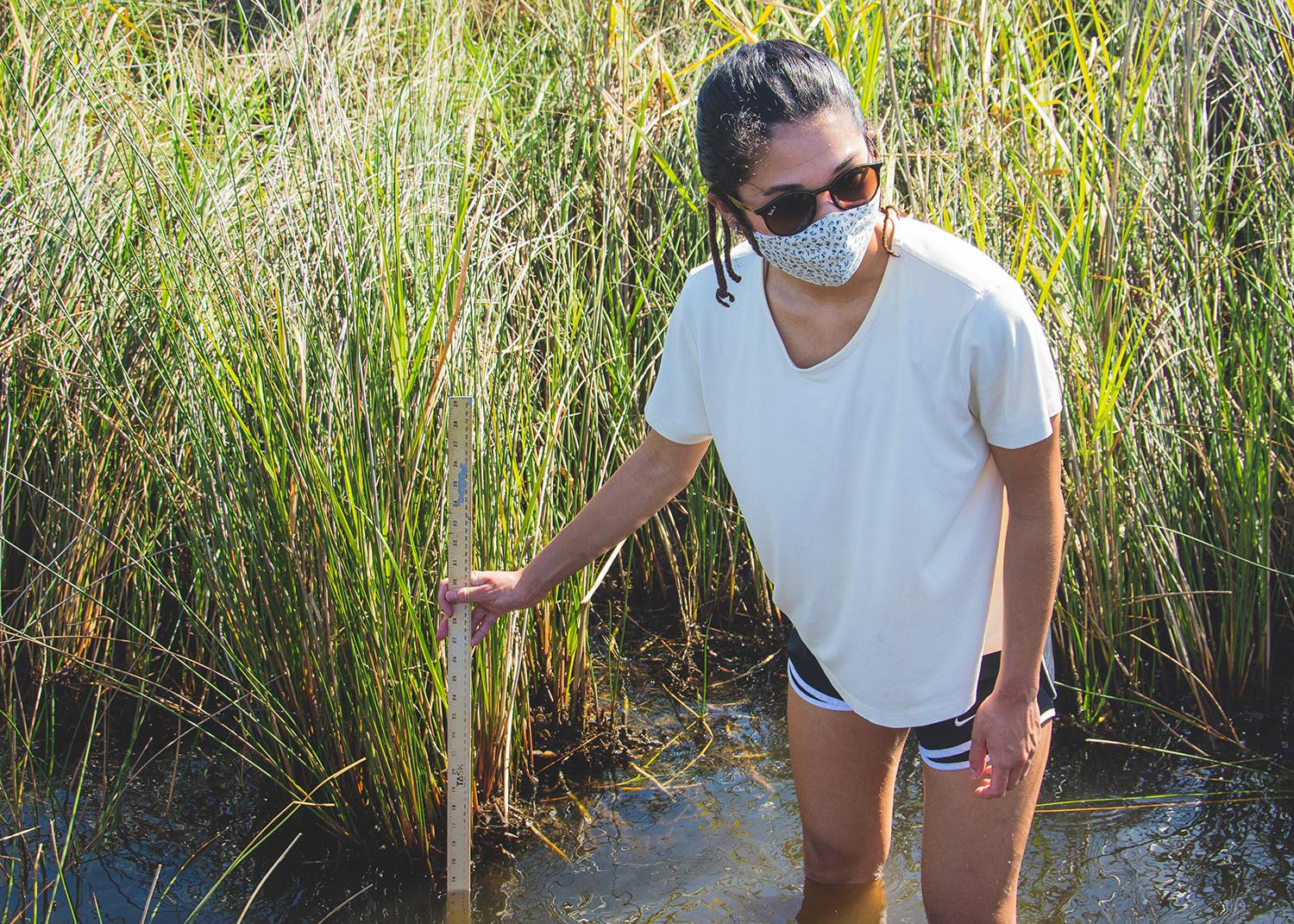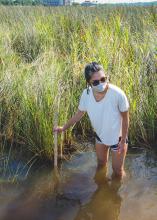Information Possibly Outdated
The information presented on this page was originally released on May 26, 2021. It may not be outdated, but please search our site for more current information. If you plan to quote or reference this information in a publication, please check with the Extension specialist or author before proceeding.
Studies shed light on sea level rise protection

Like sea levels, expenses related to flooding in communities and businesses along the Gulf Coast are rising.
One student spent last summer investigating ways to mitigate these costs while enhancing approaches to shoreline protection during her time in the Mississippi State University Extension Undergraduate Apprenticeship program. The program is targeted toward high-achieving undergraduates from across the country to give them firsthand experiences in research and extension to understand how research can be applied.
Camille Sicangco, a junior double majoring in botany and mathematics at the University of Florida, worked under the direction of MSU Extension instructor Renee Collini, who specializes in coastal climate resilience. She conducted cost-benefit analyses of living shorelines compared to traditional hardened shorelines.
Sicangco worked with personnel at Camp Wilkes in Biloxi to provide a customized cost-benefit analysis of the decision to implement a living shoreline rather than continually replacing a wooden bulkhead along the waterfront.
Camp Wilkes had a bulkhead installed to protect its 150-foot shoreline, but hurricane damage over time rendered it nonfunctional. The nonprofit organization had already worked with Eric Sparks, director of the MSU Coastal Marine Extension Program, to create a living shoreline. Sicangco conducted a cost-benefit analysis that covers a 60-year timeframe. It showed that the living shoreline will save the camp about $73,000.
“What we found was that living shorelines are more resilient and cost-beneficial than bulkheads,” Sicangco said. “Most of that comes from the fact that you do not have to conduct as much maintenance on living shorelines.”
The primary benefit of a living shoreline is its ability to grow higher as sea levels increase.
“Bulkheads are static,” Collini said. “They cannot move or grow taller. As sea levels come up, the water will overrun them, and they eventually need to be replaced because they wear out. Living shorelines involve natural elements, whether it is a marsh or oyster beds or things that mimic those that would naturally be there to keep the shoreline in place.
“Because they are made to be in this location, they do not wear out,” she added. “You do not have to replace them unless they sustain storm damage, which you would have to also do with a bulkhead. That is why we say living shorelines are a natural way to adapt to sea-level rise. When the sea changes, so does the shoreline.”
Another project Sicangco tackled was with the Jackson County Utility Authority (JCUA), which is planning to construct a new facility. She was tasked with identifying the merits of building a berm around it that would account for sea-level rise.
“We found that building a berm would be a beneficial investment,” she said. “I think the best thing is that we were able to provide them with information that made them confident in going that direction.”
Collini said these studies will be integrated into future Extension programming on sea-level rise resilience.
“This project represents a trend that we have been seeing over the past four to six years, which is that when we started this, people were not talking about sea level rise all that much, and when they were, it was sort of abstract,” she said. “Being able to put numbers to these adaptations is a big step forward.”
For more information on the Extension Undergraduate Apprenticeship program, visit http://extension.msstate.edu/apprentice.




